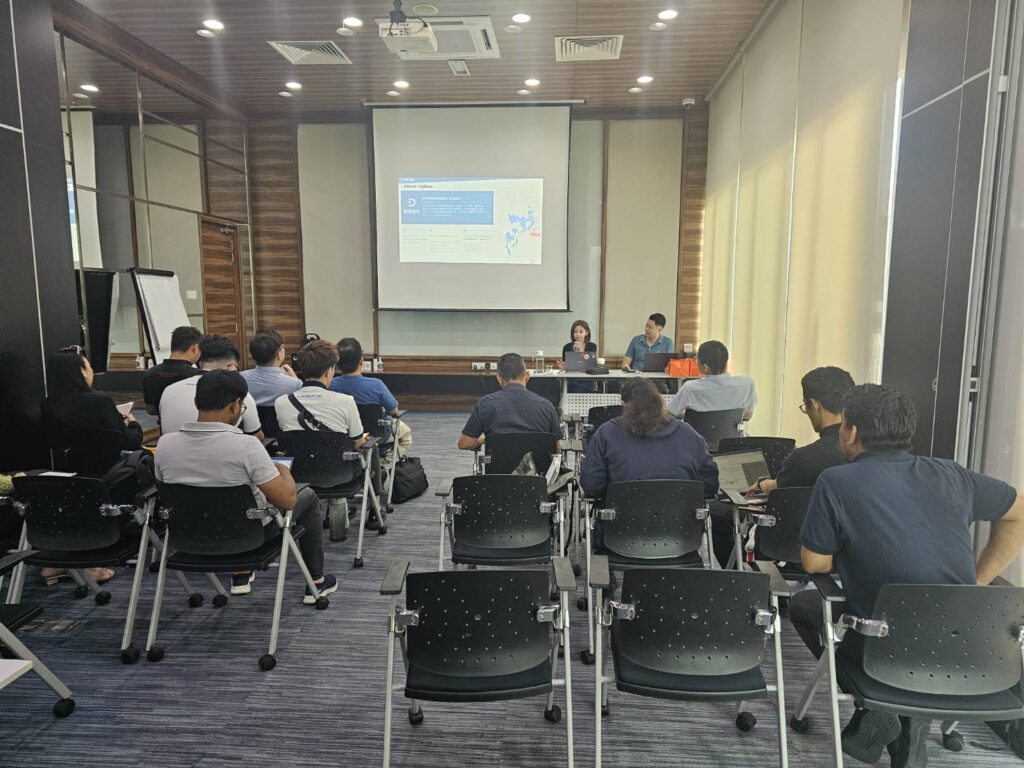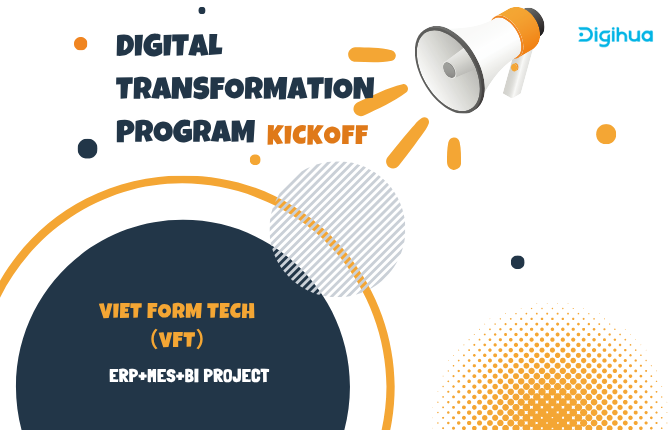Introduction
When cybersecurity risks, tariff pressures, and ESG challenges arise one after another, external uncertainties continue to mount. Across industries, peers are embracing digital transformation—some manufacturers have even advanced to the stage of smart manufacturing.
Yet, when you search for “digital transformation,” you’ll notice that everyone—from retail to finance to manufacturing—is talking about it. This raises an important question: Are the processes and goals of digital transformation universal, or do they differ across industries?
This article will guide you step by step through the essentials of digital transformation in manufacturing—from foundational concepts such as Digitization and Digital Optimization, to the strategies, tools, and cultural shifts required to achieve true transformation. It clearly outlines the core objectives of digital transformation in manufacturing and the advantages that follow.
Of course, there are many factors behind a successful transformation. This article is meant to help you build a solid understanding of what digital transformation truly entails—how to set clear goals, amplify post-transformation advantages, and avoid potential risks along the way. With this foundation, future discussions on more specific topics will be easier to align with. You can think of this article as the first step toward a successful transformation journey.
Summary
We will gradually guide you to understand the differences between Digitization, Digital Optimization, and Digital Transformation.
Drawing on 30 years of practical experience, we have distilled the goals of successful manufacturing transformations into six key directions, helping manufacturers move toward the future.
Of course, transformation is not the only path forward. As this article points out, when an organization is not yet ready—or when communication channels remain blocked—digital transformation efforts may fail despite significant investments. Therefore, in addition to outlining the key factors for successful transformation, this article also illustrates the risks commonly encountered during the process, helping manufacturers simplify complexity and move forward with clarity.
Finally, digital transformation is not merely about purchasing tools—it is about finding a clear direction and selecting the right tools to support it. Most importantly, you need an experienced partner to embark on this journey with you—to help manage risks and deliver real value.
Catalog
- 1. What Is Digital Transformation?
- 2. Core Objectives of Digital Transformation
- 3. How Does Digital Transformation Affect Organizational Culture?
- 4. Key Success Factors in Digital Transformation
- 5. Changes After Transformation
- 6. Risks of Digital Transformation
- 7. Transformation Is a Journey — You Don’t Have to Go It Alone
1. What Is Digital Transformation?
Before diving into strategies or tools, it’s essential to first understand the fundamental concepts behind digital transformation. Although the terms Digitization, Digital Optimization, and Digital Transformation are often used interchangeably, they actually represent different stages in a company’s digital evolution.
- Digitization
This refers to the process of converting physical or analog information—such as paper documents or printed records—into a digital format that systems can process.
Common examples include using OCR (Optical Character Recognition) or scanning tools to turn paper-based data into searchable digital files.
- Digital Optimization
This stage involves leveraging digital technologies to improve workflows, streamline communication, and enhance information accessibility.
Examples include adopting cloud-based document management systems or automating internal approval processes to boost efficiency and agility across departments.
- Digital Transformation
This represents a broader and more strategic shift. It refers to integrating digital technologies across all areas of an organization, fundamentally changing how manufacturers operate and deliver business value.
It’s not just about adopting new tools—it requires a cultural shift, a digital-first mindset, and a long-term vision focused on innovation, resilience, and competitive advantage.
Understanding these three stages of digital transformation helps manufacturers evaluate their current position and adopt the right approach accordingly. Since these terms are often used interchangeably in different contexts, establishing a shared understanding here will make the following sections clearer and more effective.
2. Core Objectives of Digital Transformation
The core of Digital Transformation is not merely about technological upgrades — it is about orchestrating new ways of working across the entire organization to create lasting value.
Drawing from successful transformation cases among manufacturing clients, we have identified six key objectives that drive effective digital transformation:
- Efficiency
Automate repetitive daily tasks and optimize workflows to reduce time, cost, and operational friction.
- Agility
Enable the organization to respond swiftly to market shifts, customer needs, and technological advancements.
- Operations
Streamline internal processes and systems to improve overall business performance.
- Innovation
Foster an environment that encourages continuous improvement and bold innovation across the organization.
- Business Value
Enhance the Customer Experience (CX) and deliver meaningful, measurable outcomes across all touchpoints.
- Resilience
Build the capability to withstand economic, technological, or environmental disruptions while maintaining growth momentum and business continuity.
These objectives form the foundation of transformation strategies, helping organizations secure their future operations and stay competitive in an ever-changing market landscape.
3. How Does Digital Transformation Affect Organizational Culture?
Achieving the goals of Digital Transformation requires significant changes in how people think, collaborate, and lead within the organization. At its core, digital transformation is a cultural shift, not just a technological upgrade. It challenges long-held assumptions and compels manufacturers to rethink how they define success, collaborate internally, and engage with customers.
Transitioning from a traditional organizational structure to one that supports a digital-first mindset means breaking down silos, encouraging cross-functional collaboration, and fostering a culture of agility and adaptability. Employees are empowered to innovate autonomously and are encouraged to find smarter, faster ways of working.
This transformation is far from easy. Successful cases of digital transformation consistently emphasize internal communication, transparency, and alignment between leadership and teams. It requires deliberate investment in three key areas:
- Upskilling employees to build new digital competencies.
- Securing leadership commitment to model and reinforce transformation goals.
- Creating an environment that encourages experimentation and continuous learning.
Beyond improving business performance, this cultural evolution builds a workforce that is more engaged, resilient, and future-ready. By embedding digital thinking into the company culture, manufacturers can better adapt to change, attract top talent, and continuously evolve with emerging opportunities.
Ultimately, Digital Transformation is not only about platforms—it’s about people. Manufacturers who recognize and nurture this human dimension are the ones who will truly unlock the full potential of their transformation journey.
4. Key Success Factors in Digital Transformation
While tools and systems play a vital role in driving Digital Transformation in manufacturing, they are not the ultimate goal. In the end, the success or failure of transformation depends on culture, leadership, and team capability—which means that people are the true catalyst for turning digital initiatives into lasting change.
Building a strong digital culture is the first step toward success. This means creating an environment that encourages experimentation, embraces failure, and promotes continuous learning and innovation. Such a culture enables organizations to adapt to change and remain competitive.
Equally important is cross-functional collaboration. Traditional siloed structures can slow down transformation and hinder the flow of information. By fostering collaboration across departments, companies gain deeper insights and deliver more cohesive and impactful outcomes.
As technology evolves, talent must evolve as well. Investing in employee skill development ensures that your workforce can confidently and effectively use digital systems, data, and processes. Empowering employees with knowledge not only strengthens adoption but also reduces resistance to change by building trust and confidence in new digital tools.
Of course, this cultural transformation requires strong leadership support. Leaders must lead by example—modeling digital behaviors, communicating a clear vision, and empowering their teams to take ownership throughout the transformation journey. Real progress comes when employees feel trusted, supported, and empowered to make meaningful contributions.
Ultimately, transformation should always remain human-centered. While automation can eliminate repetitive tasks, it is people who truly drive creativity, build relationships, and shape the customer experience. A people-first approach ensures that technology serves the business—not the other way around.
5. Changes After Transformation
After exploring the goals, culture, and key factors of Digital Transformation, it’s worth taking a moment to reflect: Where does your organization stand on this journey?
Have you already digitized your core operations, or are you still relying on paper-based workflows? Is your team empowered with the right systems and support, or are outdated tools and siloed processes holding you back?
Understanding your current level of digital maturity helps clarify what’s working, what’s not, and where your greatest opportunities lie. Sometimes progress means upgrading existing platforms or improving system compatibility; other times, it calls for building new capabilities from the ground up.
Manufacturers often expect immediate results after investing in digital initiatives. However, it’s important to recognize that Digital Transformation is not just a buzzword—it is a proven pathway to operational excellence. To achieve tangible business outcomes, focus on the following four key performance objectives, each directly influencing efficiency and profitability:
- Cost
Automating routine tasks, streamlining workflows, and adopting paperless processes help reduce administrative and operational expenses. By eliminating inefficiencies, manufacturers can reallocate resources to higher-value projects.
- Efficiency
Digital tools enable faster communication, real-time data access, and improved cross-department collaboration. This shortens cycle times, accelerates decision-making, and boosts overall productivity.
- Quality
Consistent workflows minimize human error, allowing manufacturers to improve production accuracy, service delivery, and regulatory compliance. The result is fewer defects, higher customer satisfaction, and more reliable output.
- Inventory
Through precise forecasting, data analytics, and digital supply-chain visibility, manufacturers can optimize inventory levels, avoid overproduction, and minimize storage costs—creating leaner and more responsive operations.
These goals are not theoretical—they represent the real, measurable results that come from aligning Digital Transformation with practical business needs. Whether your ambition is sustainable growth or smarter operations, a strong digital foundation will drive measurable impact where it matters most.
6. Risks of Digital Transformation
Digital transformation is no longer optional. Organizations that delay action risk falling behind—not only in technology, but also in talent retention, customer engagement, and market responsiveness. Before taking bold steps forward, it’s crucial to understand that Digital Transformation brings both tangible benefits and tangible risks.
- Cybersecurity Risks
As manufacturers become more interconnected and data-driven, they also become more vulnerable to cyber threats. Without proper security protocols, even minor vulnerabilities can lead to data breaches, operational disruptions, or reputational damage.
Our approach: We help clients make strategic decisions between cloud, on-premise, or hybrid deployments—based on industry regulations, operational needs, and risk tolerance—to ensure secure and compliant infrastructure.
- System Compatibility
Integrating legacy infrastructure with modern tools can result in data inconsistency, performance issues, or costly workarounds. Without a clear system integration plan, manufacturers may end up with an unstable or fragmented digital ecosystem.
Our approach: We ensure seamless integration of intelligent manufacturing systems with other vendors’ platforms. A well-coordinated integration process not only minimizes technical conflicts but also maximizes the value of existing investments.
- Cultural Resistance
Transformation often faces internal resistance—from employees uncertain about their roles in the new system to managers hesitant to change long-standing processes. Without strong change management and leadership support, digital initiatives can stall before achieving results.
Our approach: We work closely with executives to align top-down vision and communication, strengthen employee training, and maintain open communication channels that encourage participation—ensuring that transformation goals take root across the organization.
- Imbalanced Investment
Implementing expensive technologies without a clear strategy often leads to low ROI. Misaligned priorities or poor resource planning can cause organizations to overinvest in tools that fail to address real operational challenges.
Our approach: Our team works with manufacturers to align objectives with business priorities, validate actual needs, and select solutions that directly target operational pain points and measurable outcomes.
These risks are manageable. Transformation should not be about rushing forward at any cost, but about moving strategically—with clarity, coordination, and confidence. With the right partner, phased implementation, and a strong internal culture, transformation becomes both achievable and sustainable.
At DigiHua, we bring over 30 years of manufacturing and digital transformation experience—which means we know how to identify potential risks early and design strategies to mitigate them. Our phased, measurable approach begins with goal alignment, uses the right systems, and ensures seamless stakeholder collaboration. This method not only controls risk but also maximizes returns, delivering tangible outcomes such as cost reduction, greater efficiency, improved quality, and optimized inventory.
7. Transformation Is a Journey — You Don’t Have to Go It Alone
Digital Transformation is a journey that requires a clear direction, the right tools, a supportive culture, and—most importantly—experienced guidance. For manufacturers still exploring the path forward, the smartest move is not to rush into adopting new technologies, but to partner with experts who understand your industry, operations, and goals.
At DigiHua, we combine decades of manufacturing experience with proven technical expertise and a consultative mindset to help manufacturers simplify complexity and move toward clarity. Whether you’re taking the first step of your digital transformation journey or looking to optimize your existing digital strategy, our team provides practical, tailored solutions—not one-size-fits-all templates.




